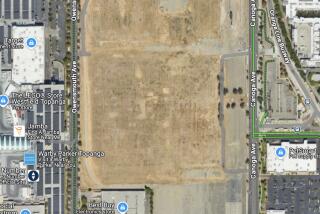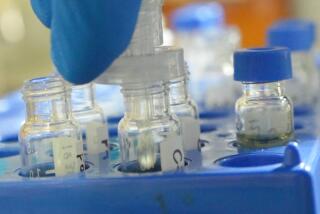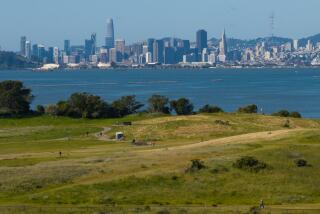Delay Planned to Allow Community to Air Concerns : Protests Won’t Stop Toxic Liquid Disposal Testing
- Share via
Plans by a defense company to test a new toxic liquid disposal method in Van Nuys probably will go forward despite a protest Wednesday by more than 100 environmentalists and residents who live near the site, state and company officials said.
Officials for the state and Marquardt Co., a defense manufacturer at 16555 Saticoy St., said the tests will be delayed at least several weeks to give the community time to express concerns at a community meeting neighbors have arranged for Oct. 6. The tests were to begin later this month.
A delay is likely, said Kim Wilhelm, supervising engineer with the state Department of Health Services, “but if you’re asking whether we’re going to cancel the program, the answer is no.” Health Services is involved because the state has contributed $140,000, one-third of the cost of the tests.
Angry People
“I think there are a few people who are angry and need to have it explained to them,” said Marquardt President Frank X. Marshall. “It’s unfortunate. . . . We really believe this is the technology of tomorrow.”
The company also must secure a permit from the South Coast Air Quality Management District. Jacqueline Switzer, a spokeswoman for the agency, said Marquardt must supply more information before a decision can be made.
The company wants to test a method of disposing of troublesome chemicals by incinerating them under controlled circumstances. The chemicals are carbon tetrachloride and trichlorobenzene-- both used as solvents--and a lacquer thinner that contains methyl isobutyl ketone, xytol and pentoxone. The tests would occur three days a week for five weeks.
Environmentalists said carbon tetrachloride is linked to cancer and liver and kidney ailments, while trichlorobenzene becomes more volatile when it has contact with steam, which is part of the incineration process.
Protesters gathered outside the Marquardt gates carrying placards urging Health Services to call a public hearing on the tests. Members of Greenpeace, an international environmental organization, said the tests would plant a seed for a hazardous waste incinerator in the San Fernando Valley.
Protesters also said the tests could harm Valley air quality, and they compared potential accidents to the toxic cloud that caused thousands of Southeast Los Angeles residents to flee their homes last weekend.
“This is supposedly a state-of-the-art way to dispose of toxic wastes,” said Bradley Angel, toxics campaign coordinator for Greenpeace. “At best it is an unproven technology.”
No public hearings or state permits are required for the testing, Wilhelm said, because the plant will use chemicals created specifically for the tests, rather than castoff hazardous wastes. However, he acknowledged that these chemicals are components of hazardous waste and are themselves considered toxic.
Marquardt representatives insisted they want only to test the high-temperature process for possible sale to the U.S. government or other interested companies.
“We would never build a toxic incineration plant here on our property. Never,” Marshall said. “We are an aerospace company.”
Mark L. Sujata, who is in charge of the Marquardt tests, said similar tests of the incineration technology had been tried in 1976 at the plant under a federal program and again during more recent engine tests.
Marquardt discovered the incineration process almost by accident, Marshall said, when the federal government asked the company to test emissions of sophisticated engines it was producing under a defense contract. Engineers discovered that 99.9% of the jet fuel chemicals had been consumed by the more than 3,000-degree temperatures.
Sujata took reporters on a tour of the test site and pointed out a monitoring system that will shut down the tests within seven seconds of any accidental chemical release. He said the incineration process breaks down toxic material into carbon dioxide and salts that are then filtered out. Plant emissions will consist of only water and air, he said.
Wednesday’s protest was prompted by notices Health Services sent to 1,000 Marquardt neighbors on Aug. 10. Residents said they should have been given more lead time and complained that notices should have gone to more households because emissions could travel throughout the Valley.
“The prevailing winds know no boundaries,” said Sylvia Fliss of Panorama City.
Wilhelm said the notices were held until Marquardt supplied detailed information about the testing “so we had something substantial to tell people.”
Marquardt is owned by Ferranti International, an English electronics firm. It is a subcontractor to at least a dozen of the nation’s largest defense concerns and has been examined in at least two investigations of the defense supply scandal.
Among the company’s more than $100 million in defense contracts are cluster bombs, turbines, warheads and thrusters used on satellites and on the space shuttle to reposition the vehicle once it is in space.
More to Read
Sign up for Essential California
The most important California stories and recommendations in your inbox every morning.
You may occasionally receive promotional content from the Los Angeles Times.










